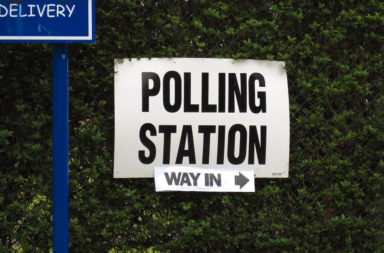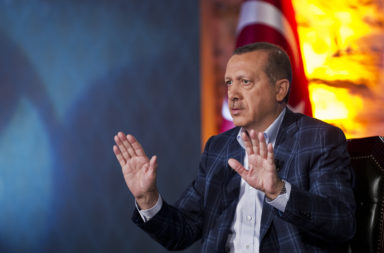Which are the different groups fighting in Syria? Who is supporting ISIS and who is fighting against them? This article explains everything you need to know about the fighters in Syria.
The Islamic State of Iraq and the Levant (ISIL/ISIS)
Number of fighters: 25,000-80,000
- Alternatively translated as Islamic State of Iraq and Syria, or Islamic State of Iraq and al-Sham (ISIS)is a militant group claiming to follow an Islamic fundamentalist, Wahhabi doctrine of Sunni Islam. The group is also known as Daesh.
- The militant group has called itself the Islamic State or IS, since announcing a worldwide caliphate in June 2014.
- Abu Bakr al-Baghdadi is named as its caliph.
- The group’s warped concept of an “Islamic State” and the propaganda of a caliphate have been globally disapproved by the United Nations, various governments, and mainstream Muslim groups.
- As of December 2015, the group has captured large landlocked territories in Iraq and Syria, with a population estimate ranging between 2.8 million and 8 million people.
- IS gained importance in early 2014 when it drove Iraqi government forces out of key cities in its Western Iraq offensive, leading to the capture of Mosul and the Sinjar massacre. The possibility of a collapse of the Iraqi state prompted a renewal of US military action in the country.
- Total numbers of fighters differ widely, with the US putting it around 25,000. Kurdish officials put the number up to 200,000
- Foreign fighters account for around two thirds of the group, with others being Iraqi and Syrian nationals.
- ISIS is known for gory videos of beheadings of soldiers, civilians, journalists and aid workers, and destruction of cultural heritage sites.
- Globally, Islamic religious leaders have condemned the ISIL ideology and reject the idea that the group’s activities follow the religion’s real teachings or virtues.
- Over 60 countries are directly or indirectly waging war against ISIL.
Al-Nusra Front
Number of fighters: 15,000-20,000
- Al-Nusra Front, or Jabhat al-Nusra, is also considered as al-Qaeda in Syria or al-Qaeda in the Levant. It is a Sunni Islamist unit combating against Syrian Government forces in the Syrian Civil War, having the objective of forming an Islamist state in the country.
- It was officially formed on 23 January 2012.
- It is Syria’s branch of al-Qaeda, and also operates in Lebanon.
- Around the beginning of 2015, the group became one of the most important components of the powerful jihadist joint operations room called the Army of Conquest. It took over large regions in north-western Syria. However, by late 2015 al-Nusra’s role in the alliance became unclear.
- In early 2015, it was reportedly alleged that Qatar and other Gulf states were trying to get al-Nusra to break away from al-Qaeda, post which they would back al-Nusra with money. In March 2015, al-Nusra’s leadership denied a division or that discussions with Qatar had taken place. As of 2015, al-Nusra collaborates with Islamist and jihadist rebel groups.
Free Syrian Army
Number of fighters: 100,000
- The Free Syrian Army is a cluster of deserted Syrian Armed Forces officers and soldiers, launched during the Syrian Civil War on 29 July 2011. It was started by seven or eight Syrian officers who claimed their goal was to take down the Assad government.
- The FSA’s power has always been uncertain. Certain “moderate” groups combating under the banner of the FSA are believed to be militarily supported by a coalition – the US-led anti-ISIL coalition, having the backing of 59 other countries.
- The US and Turkey have been preparing the FSA and the US and Saudi Arabia have provided the FSA with weapons.
- During the period between July 2012 and July 2013, lack of discipline and internal strife destabilized FSA, while jihadist groups entered northern Syria and gained more power.
- The FSA joined a coalition called ‘Supreme Military Council of Syria’, in September 2014. This included the FSA as well as moderate Muslim rebel groups, which allied with the mainly Christian Syriac Military Council coalition to fight against both the Assad government and ISIS.
Ahrar ash-Sham
Number of fighters: 10,000–20,000
- Harakat Ahrar ash-Sham al-Islamiyyais the largest rebel group in Syria. It is second most powerful brigade fighting against al-Assad, after the Free Syrian Army.
- It is a coalition of several Islamist and Salafist groups that united into a single unit in order to fight against the Bashar al-Assad-led Ba’athist government during the Syrian Civil War.
- It is supported by Turkey and Saudi Arabia.The group aims to create an Islamic state under Sharia law.
- The group is believed to be joined with al-Nusra Front, the al-Qaeda branch in Syria. Some U.S. officials believe it to be a terrorist organization due to its alleged links to al-Qaeda.
Asala wa-al-Tanmiya
Number of fighters: 13,000
- The Asala wa-al-Tanmiya, also known as The Authenticity and Development Front , is a US-supported alliance of rebel groups also functional during the Syrian Civil War, includes Islamists, military defectors, and civilian rebels.
- Saudi Arabia funds The Authenticity and Development Front. One of the groups that is involved is the Harakat Nour al-Din al-Zenki, which was also part of the Army of Mujahedeen.
- The Authenticity and Development Front operated American-made BGM-71 TOW weapons which were seized from ISIS.
Sham Legion
Number of fighters: 4,000
- The Sham Legion is also known as Homs Legion. It is a union of Islamist rebel groups which were created in order to combine the power of moderate Islamists during the Syrian Civil War.
- The alliance launched with 19 different groups, some of which were earlier connected to the Syrian Muslim Brotherhood and Shields of the Revolution Council.
- They established the Fatah Halab joint operations room on 26 April 2015, along with other large Aleppo based groups.
Ajnad al-Sham Islamic Union
Number of fighters: 3,000
- The Ajnad al-Sham Islamic Union is a coalition of Islamist groups which have been active since the Syrian Civil War. This includes: the al-Habib al-Mustafa Brigades, the Amjad al-Islam Gathering, the Sahaba Brigades and Battalions, the Shabab al-Houda Battalions, and the Der al-Asima Brigade.
- On 18 February 2016, its fighters from eastern Ghouta proclaimed the “full incorporation” of its fighters into al-Rahman Legion. However, it was clarified that its fighters based in the western Damascus suburbs of Darayya and Moadammiyyeh as well as in southern Damascus would still operate under the Ajnad al-Sham Islamic Union banner and where not a part of this merger.
Jaysh al-Islam
Number of fighters: 17,000 – 25,000
- Jaysh al-Islam, also known as Liwa al-Islam or the Brigade of Islam is an association of Islamist and Salafist units involved in the Syrian Civil War.
- The organization has refused membership of the Free Syrian Army.
- It mainly operates in the Damascus area and is the largest rebel faction in the area. The group is also part of the Islamic Front.
- The group along with Ahrar ash-Sham are strongly supported by Turkey and Saudi Arabia.
- The group wants to eventually create an Islamic state under Sharia law. Jaysh al-Islam is designated as a terrorist organization by Syria, Russia, Iran and Egypt.
Jaish al-Fatah
Number of fighters: 10,000
- The Jaish al-Fatah also known as Army of Conquest is a joint operations room of Islamist Syrian rebel factions participating in the Syrian Civil War.
- Again, it is actively supported by Saudi Arabia and Turkey.
- The association was launched in March 2015 by Islamist rebel factions mainly active in the Idlib Governorate, with some sections active in the Hama and Latakia Governorates.
- Jaish al-Fatah was considered as one of the “powerbrokers” in Idlib, Hama, and Daraa and Quneitra provinces, according to an October 2015 publication of the Washington D.C.-based Institute for the Study of War.
- However, this reach does not extend to Damascus province, as it is primarily “anti-regime” and “anti-Hezbollah” but not essentially “anti-ISIS”.
Image source: Flickr, Link to Photo




